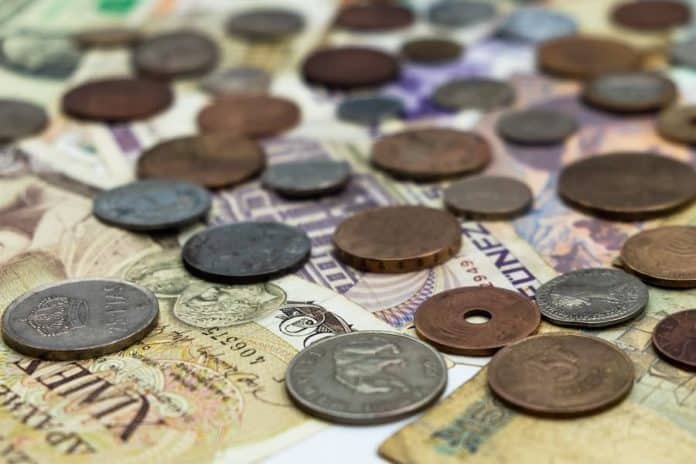Abraham Lincoln has been a part of American history since his presidency from 1861 to 1865. His face is iconic and can be seen on many different forms of American currency, one of the most recognizable being the penny. But why does Abraham Lincoln’s face right on the penny? The answer to this question is rooted in an interesting story of how the penny came to be. It all started with a competition held by the United States Mint in 1909 to find the perfect design for the one-cent coin. After a long search, the winning design came from sculptor Victor David Brenner and featured a right-facing portrait of Abraham Lincoln. This portrait has since become an iconic symbol of American history, and it serves as a reminder of one of the most influential presidents in the history of the United States.
Why is Lincoln facing right on the penny?
There’s no definitive answer to this question. Some people say that it’s because President Lincoln wanted to be facing the people he was sworn to serve, while others say it’s because it would have been too difficult and expensive to produce coins with two different orientations.
Why Is Abraham Lincoln Facing Right On The American Penny?
1. Lincoln is a Republican
Lincoln was a Republican because he believed in limited government, free markets, and individual liberty. He was against slavery and supported the Union during the Civil War.
2. Lincoln wanted to abolish slavery
Lincoln wanted to abolish slavery during his presidency, so he could end it once and for all. However, he was unable to do this because of the Civil War.
3. Lincoln wanted to return power to the states
Lincoln believed that each state should have equal power when it came to deciding how its own laws would be made and enforced.
4. Lincoln’s image on the penny symbolizes freedom
The portrait of Abraham Lincoln’s face on the penny represents freedom in America – just as it does around the world! The portrait is symbolic of our founding principles as a nation: freedom from tyranny, from oppression, from domination – and from being ruled by others!
5. Lincoln did not want to be on the penny
Lincoln refused to have his face on the penny because he thought it would make him look like a king or a dictator. He felt that it was important for our nation’s leaders to be chosen by the people, not by the government.
6. The “lincoln” in Lincoln’s name is silent
The “l” in Lincoln is silent – just like the “s” in Caesar or the “m” in Roosevelt. This helps us remember that Abraham Lincoln was an American hero and not a king!
7. The penny symbolizes freedom worldwide
Abraham Lincoln’s image on our nation’s coin represents freedom for people all over the world! The penny also represents America’s strength, as well as its honesty and integrity – especially when it comes to keeping our coin free from counterfeiters!
History Of The Penny
1. Lincoln was on the penny before Lincoln
The first US coin to feature a portrait of a real person, the Braided Hair Large Cent, featured a bust of President George Washington. The image was engraved by Robert Scot and appeared on the cents from 1793 to 1796.
2. The penny isn’t really worth a penny anymore
The value of the Lincoln penny has gone down over time. In 1909, when Victor David Brenner’s design was chosen for the cent, it was equal to one cent in currency value. But inflation has taken its toll on the penny’s purchasing power over the years: today, it’s only worth about 2 cents!
3. The Lincoln Memorial wasn’t built until after his death
The Washington Monument in Washington D.C., which is dedicated to our nation’s first president, wasn’t completed until 1885 – that’s almost 38 years after President Lincoln died!
4. Abraham Lincoln wasn’t always on our money
The Lincoln penny wasn’t the first time that Abraham Lincoln was featured on US currency. In fact, it wasn’t until 1909 that his face appeared on a coin. Before that, he only appeared on the $5 bill from 1869 to 1873. It wasn’t until 1914 that his face was featured on the $10 bill, and it wasn’t until 1928 that he appeared on the $1 bill.
5. Lincoln’s face is everywhere!
There are lots of places where you can see President Lincoln’s face: not just on pennies and paper money, but also on postage stamps, a memorial in Washington D.C., and even Mount Rushmore!
6. Lincoln’s image is in the public domain
Lincoln’s likeness is in the public domain, which means that anyone can use it for any number of purposes. The same goes for his face: anyone can have their own design made based on it, and there are even companies that make Abraham Lincoln-inspired products!
7. There’s a penny museum in Philadelphia
The Franklin Institute has an entire museum dedicated to pennies! There are over 100,000 pennies on display at this museum, and you can learn about how pennies were designed and minted by going through a special exhibit on the history of coins. Plus, you can even go through the dime and quarter collections!
8. Lincoln’s face is on everything from postage to toys
If you want to see the face of our 16th president on something other than paper money, there are lots of things you can find with it. You can find Lincoln pennies at antique stores across the country, and his likeness is also on postage stamps – a lot of them! There are even toys that feature him in action!
9. Lincoln never wore pants
You might be surprised to know that President Lincoln did not wear pants. He was probably one of the first presidents to wear a top hat, as well as other styles of headgear.
10. Lincoln’s face has been altered over time
In fact, Lincoln’s image has been altered a lot over time. You can see his face on paper money, postage stamps, and even toys! However, Lincoln’s features have changed a lot over the years. For example, he didn’t have a beard when he was president – he only had one during his campaign for the presidency.
Symbolism Of The Right-Facing Portrait
1. Lincoln’s facial features are symmetrical
Lincoln’s facial features are symmetrical, which means that they look the same from all sides. The left side of his face is almost identical to the right side. However, Lincoln’s beard is not symmetrical; it’s longer on the left side than on the right.
2. Lincoln’s facial features are evenly spaced apart
Lincoln’s facial features are evenly spaced apart, and they are arranged in a way that looks natural and normal. His eyes, nose, and mouth all line up perfectly with each other.
3. Lincoln has a long neck
Lincoln has a long neck – it stretches from his shoulders to his chin! This long neck helps him to look taller than he actually is because he doesn’t have to tilt his head back too far when he looks up at other people.
4. Lincoln wears a beard
President Abraham Lincoln was one of only two presidents who wore beards (Washington was the other). Lincoln’s beard was very long and full, which made it look like he had a long face.
5. Lincoln wears a top hat
Lincoln wears a top hat in almost all of his portraits. He wears this hat because he is the president, so he has to look the part!
6. Lincoln doesn’t smile in his portraits
Lincoln doesn’t smile in most of his portraits – except for one! In one famous photograph, he has a smile on his face, but it’s not the same kind of smile that we see from him throughout history. This smile is very different from how we typically see him frowning or scowling in other pictures.
Conclusion
The 1909 penny is a significant piece of American history. The penny is one of the most common forms of currency in the United States, and it is often used as a way to collect different designs as a hobby. The penny has gone through many design changes over the years, and the 1909 penny is especially important as it featured the first right-facing portrait of Abraham Lincoln. The design of the penny was inspired by a photograph of Lincoln, and it is a constant reminder of one of the most influential presidents in the history of the United












